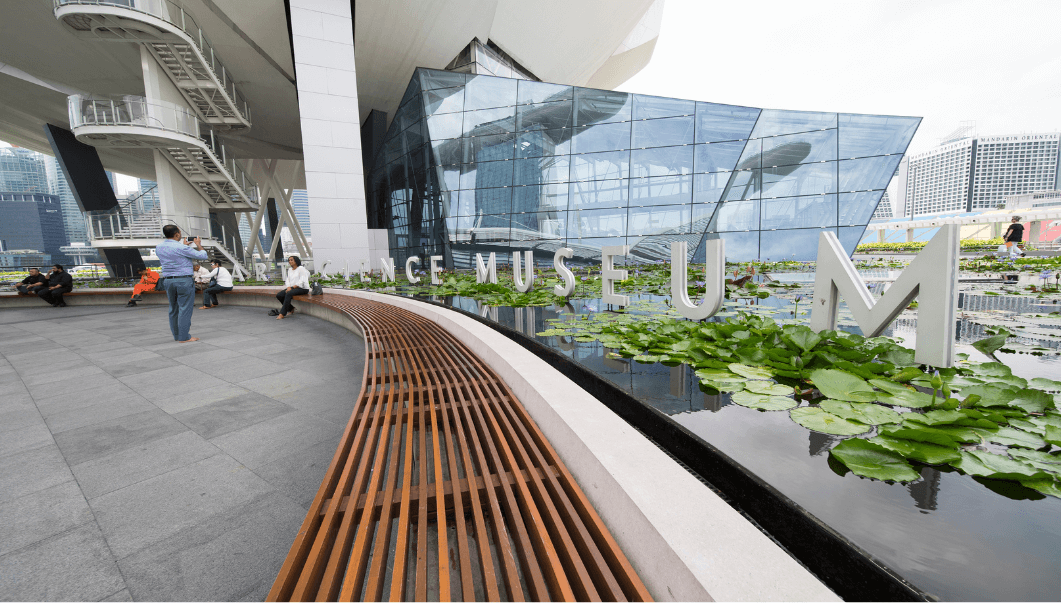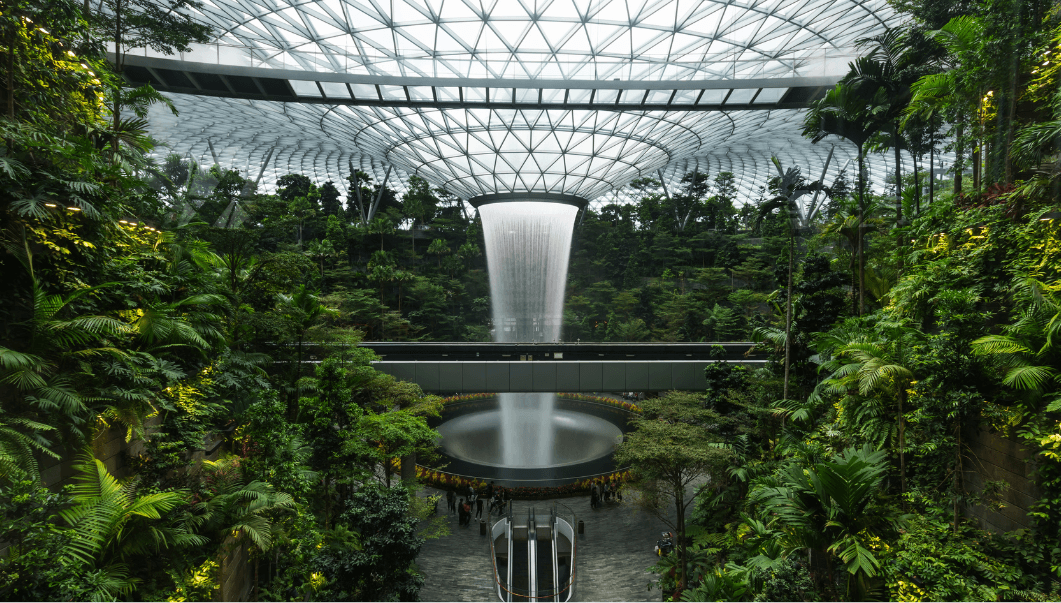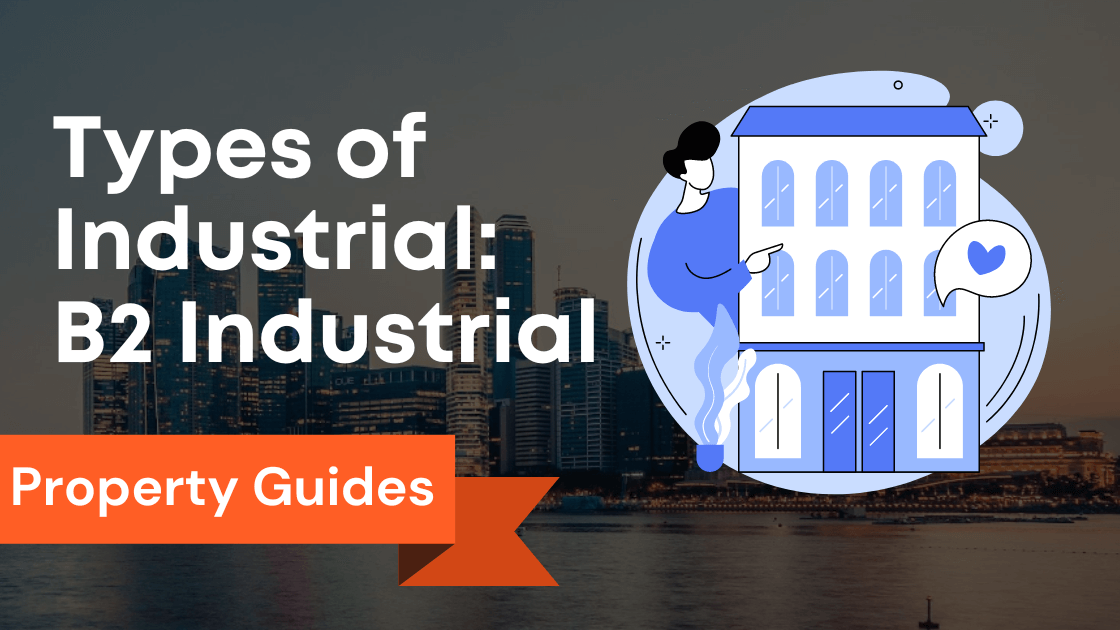
Embarking on a journey through innovation and economic growth, we delve into the captivating world of business and science parks.
These hubs of creativity and collaboration stand as beacons of progress, where companies and research institutions converge to shape the future.
Imagine a space where ideas transcend boundaries, knowledge flows like a river, and groundbreaking discoveries are nurtured.
Step into the significance of these parks, where innovation takes center stage.
Business and science parks are not merely physical spaces but incubators of ideas, catalysts of change, and engines of economic transformation.
These dynamic environments create the perfect fusion of academia and industry, sparking a symphony of collaboration that births new products, services, and technologies.
Key Takeaways
- Driving Innovation: Business and science parks provide a physical space for companies to collaborate and share ideas, fostering innovation across industries.
- Startup Support: These parks offer facilities, flexible spaces, and amenities that cater to startups’ needs, including networking events and mentorship programs.
- Scientific Research: Science parks, located near universities, encourage collaboration between academia and industry, facilitating cutting-edge research and technology development.
- Technology Advancements: Science parks are closely tied to technological advancements, leveraging research expertise to drive innovation.
- Economic Growth: While science parks focus on research, business parks support commercialization, driving economic growth through innovation.
- Collaborations: Tenants in both science and business parks collaborate on joint research, technology transfer, and shared resources.
- Global Examples: Notable science parks include Singapore Science Park and Cambridge Science Park, fostering innovation in various industries.
- Considerations: When choosing a science park, factors such as research resources, talent access, and park reputation are important.
- Facilities & Support: Science parks offer advanced labs, shared spaces, and various amenities to support tenant growth.
- Innovation Ecosystem: Science parks evolve beyond offices, encouraging collaboration, creativity, and innovation.
Understanding the Role of Business and Science Parks in Fostering Innovation

The significance of business and science parks in driving innovation
Business and science parks play a crucial role in driving innovation.
These parks provide a physical space for companies to locate their offices and foster an environment that encourages collaboration and sharing of ideas.
By bringing together companies from various industries and sectors, business parks facilitate the exchange of knowledge and expertise, leading to the development of new products, services, and technologies.
How business parks provide a conducive environment for startups and companies
Business parks offer a wide range of facilities and support services that cater to the needs of startups and companies.
They provide modern and well-equipped buildings, flexible office spaces, and access to amenities such as meeting rooms, event spaces, and recreational areas.
Additionally, business parks often host networking events, workshops, and mentorship programs to foster entrepreneurship and help companies thrive.
The role of science parks in promoting scientific research and development
Science parks are specifically designed to promote scientific research and development.
These parks are often located near universities and research institutions, creating an ecosystem that encourages collaboration between academia and industry.
By providing state-of-the-art laboratories, research facilities, and access to specialized equipment, science parks enable companies to conduct cutting-edge research, develop innovative solutions, and advance knowledge in their respective fields.
Exploring the Synergy Between Science and Business Parks: A Deep Dive
The connection between science parks and technological advancements
Science parks are closely linked to technological advancements.
By bringing together research-intensive companies and facilitating collaborations between tenants, science parks create an environment that fosters innovation and the development of new technologies.
The proximity of science parks to universities and research institutions also enables companies to tap into the expertise and talent pool available in academia, further accelerating technological advancements.
How business parks complement science parks in driving economic growth
While science parks focus on scientific research and development, business parks complement them by providing a platform for commercializing and applying scientific discoveries.
Business parks offer companies the necessary infrastructure, resources, and support to transform scientific ideas into marketable products and services.
This collaboration between science and business parks is crucial in driving economic growth by creating high-tech and knowledge-based industries.
Collaborations and partnerships between science and business park tenants
Tenants in science and business parks have ample opportunities to collaborate and form partnerships.
These collaborations can range from joint research projects and technology transfer to spin-off companies and shared resources.
By working together, companies in science and business parks leverage each other’s expertise and resources, leading to the development of innovative solutions and the growth of the overall ecosystem.
Navigating the Thriving Landscape of Science Parks and Research Cities
An overview of prominent science parks around the world
Science parks can be found in various countries around the world, each with its own unique characteristics and focus areas.
Singapore Science Park, for example, is a leading science park in Asia that houses companies from diverse sectors such as biotechnology, pharmaceuticals, and information technology.
Similarly, Cambridge Science Park in the UK is renowned for its concentration of technology and life sciences companies.
Key considerations for companies looking to locate in a science park
When considering locating in a science park, companies should evaluate factors such as the availability of research resources, access to talent and expertise, proximity to universities and research institutions, and the supportive ecosystem offered by the park.
Additionally, the connectivity and infrastructure of the park, as well as its reputation and track record, should also be considered.
Exploring the facilities and support services offered by science parks
Science parks typically offer a wide range of facilities and support services to cater to the needs of their tenants.
These include state-of-the-art laboratories, research facilities, incubation centers, shared office spaces, and access to specialized equipment.
Science parks also provide support services such as business development assistance, funding support, intellectual property management, and networking opportunities to facilitate the growth and success of companies.
The Evolution of Business Parks: From Traditional Offices to Innovative Hubs
The transformation of business parks into vibrant innovation ecosystems
Business parks have evolved beyond traditional office spaces into vibrant innovation ecosystems.
They have shifted their focus from offering mere office spaces to creating an environment that promotes collaboration, creativity, and innovation.
Modern business parks incorporate coworking spaces, innovation centers, and maker spaces, providing companies with opportunities to connect, network, and engage with like-minded individuals and organizations.
The role of business parks in driving the growth of knowledge-based economies
Business parks play a crucial role in driving the growth of knowledge-based economies.
By attracting companies from high-tech and knowledge-intensive industries, business parks contribute to developing clusters and ecosystems that foster innovation, create high-paying jobs, and drive economic growth.
The concentration of companies nearby also encourages knowledge spillovers, leading to a flow of knowledge and ideas that further fuels innovation and economic development.
Examples of successful business park developments and their impact on local economies
Successful business park developments have had a significant impact on local economies.
For instance, Singapore Science Park 1 and Singapore Science Park 2 have played a pivotal role in positioning Singapore as a hub for technology and research-intensive industries.
These parks have attracted global companies and have contributed to Singapore’s emergence as a leading innovation and business destination in Asia.
Similarly, establishing business parks such as those managed by CapitaLand Group in the UK has spurred economic growth and created employment opportunities in various sectors.
Unveiling the Connection Between Universities and Business Parks
Collaborative initiatives between universities and business parks
Universities and business parks often collaborate on various initiatives to bridge the gap between academia and industry.
Universities provide a rich talent pool of graduates and researchers, while business parks offer practical experience, internships, and technology transfer opportunities.
Collaborative projects, joint research, and sponsored programs are examples of initiatives that benefit universities and companies in business parks.
The benefits of proximity to universities for companies in business parks
Being near universities provides several benefits for companies in business parks.
It allows access to research and development facilities and collaboration with leading academics and researchers.
Companies can tap into the university’s knowledge and expertise, leverage research capabilities, and attract top talent from the university’s pool of graduates.
How universities contribute to the talent pool and research capabilities of business parks
Universities play a crucial role in contributing to business parks’ talent pool and research capabilities.
Universities generate knowledge and technology through their research activities that companies in business parks can commercialize.
Universities also provide specialized training and education, ensuring a continuous supply of skilled professionals.
This collaboration between universities and business parks enhances the ecosystem and drives innovation and economic growth.
Singapore Science Park: A Global Model for Innovation and Economic Growth

Singapore Science Park is a prime example of a successful business and science park.
It is located near major universities and is home to a vibrant community of research institutions and technology companies.
The park has become a global innovation hub, attracting high-tech companies from all over the world.
Technological advancements driving growth in Singapore
Singapore’s commitment to research and development has resulted in numerous technological advancements in various sectors.
The collaboration between industry and academia in Science Park has led to healthcare, technology, and more breakthroughs.
This has positioned Singapore as an innovation leader and contributed to its economic growth.
Creative cluster fostering innovation and collaboration
The Science Park is designed to promote collaboration and knowledge-sharing among its tenants.
The park includes modern buildings with open floor plates, creating a dynamic environment encouraging interaction and exchanging ideas.
This fosters innovation and allows for cross-fertilization of ideas between different companies and research institutions.
Renting commercial property in Singapore Science Park
Companies looking to establish themselves in Singapore can find office space in Singapore Science Park.
The park offers a range of accommodation options, from small offices to large corporate headquarters.
The quality of the facilities and amenities and its proximity to education and research institutions make it an ideal location for businesses looking to establish themselves in the region.
UK Business Parks: Catalysts for Diverse Industry Clusters
The UK’s business parks are also significant contributors to the country’s economy.
These parks are crucial in attracting high-tech companies, nurturing the service sector, and driving innovation across various industries.
Exploring the role of business parks in the UK economy
UK business parks provide the infrastructure and support necessary for companies to thrive.
These parks are usually located near major urban centers, allowing easy access to transportation and amenities.
They serve as a hub for various industries, from technology and finance to healthcare and education.
Attracting high-tech companies to business park spaces
Business parks attract high-tech companies by offering state-of-the-art facilities, access to a skilled workforce, and opportunities for collaboration with other innovative companies.
These companies’ presence in business parks drives economic growth and creates a vibrant ecosystem where new ideas can flourish.
The services sector thriving in UK business parks
While high-tech companies are significant in UK business parks, the service sector thrives in these environments.
Business parks provide a conducive setting for companies in the service sector, such as consulting firms, marketing agencies, and legal practices.
The availability of flexible workspaces and amenities tailored to the needs of these companies make business parks an attractive choice for their operations.
Innovative Architecture and Design in Modern Science Park Developments

The design of science park developments is crucial in creating an environment that fosters innovation and knowledge sharing.
Modern science parks are characterized by innovative architecture, energy-efficient buildings, and lifestyle amenities that enhance the overall experience of the park’s occupants.
Creating dynamic environments for knowledge sharing
Science parks are designed to facilitate sharing of knowledge and ideas among companies and research institutions.
The layout of science parks includes spaces for collaboration, such as open-plan offices, communal areas, and meeting rooms.
This encourages interaction and promotes an innovative culture.
Modern buildings and energy-efficient designs
Modern science parks prioritize sustainability and energy efficiency.
The buildings within these parks are designed to minimize their environmental impact through energy-efficient technologies and materials.
This reduces carbon emissions and helps companies operating within the park to be more environmentally responsible.
Incorporating lifestyle amenities in science park developments
Science parks understand the importance of creating a conducive work-life balance.
Many modern science parks incorporate lifestyle amenities such as gyms, restaurants, and green spaces into their design.
These amenities enhance the overall well-being of the park’s occupants and contribute to a positive work environment.
Transformative Impact: How Science Parks Contribute to Economic Resilience
Science parks play a significant role in contributing to the post-industrial economy and building economic resilience.
These parks create a culture of innovation, attract investment, and catalyze economic growth in their respective regions.
Contributing to the post-industrial economy through innovation
With the decline of traditional manufacturing industries, science parks have emerged as a critical driver of economic growth in post-industrial economies.
By fostering innovation and supporting high-tech industries, these parks create new employment opportunities and contribute to the overall financial resilience of the region.
Building a culture of innovation in Science park environments
Science parks provide an environment that encourages and supports innovation.
By bringing together like-minded companies and research institutions, science parks enable the exchange of ideas, collaboration, and the commercialization of research.
This cultivates a culture of innovation that drives economic growth and attracts investment.
Case study: The Role of Science Park 1 in economic growth
Science Park 1, located along Science Park Road in Singapore, is a prime example of how science parks can contribute to economic growth.
It has become a hub for technology companies and research institutions, attracting investment and creating jobs.
The success of Science Park 1 is a testament to the transformative impact that well-designed science parks can have on a region’s economy.
Sustainability and Green Initiatives in Science and Business Park Developments

Sustainable development is a priority for science and business parks.
These developments incorporate energy-efficient designs and green technologies, prioritizing integrating green spaces and amenities.
This benefits the environment and enhances the overall well-being of the park’s occupants.
Promoting sustainability in science and business parks
Science and business parks recognize the importance of promoting sustainability in their operations.
These parks implement measures to reduce energy consumption, minimize waste generation, and promote responsible resource management.
These parks contribute to global efforts to combat climate change by adopting sustainable practices.
Energy-efficient buildings and green technologies
Science and business parks prioritize using energy-efficient technologies and materials in constructing and operating their buildings.
This includes using renewable energy sources, energy-efficient lighting, and intelligent building management systems.
These initiatives reduce the parks’ carbon footprint and contribute to cost savings for the businesses operating within them.
Integrating green spaces and amenities in park developments
Science and business parks incorporate green spaces and amenities into their design to provide occupants with a pleasant and sustainable environment.
These green spaces improve the aesthetic appeal of the parks and contribute to the overall well-being of the people working there.
Amenities such as outdoor seating areas, walking trails, and recreational facilities enhance the work-life balance of park occupants.
From Vision to Reality: Creating Vibrant Communities in Science Parks
Importance of Science Parks in Economic Development
Science parks drive economic growth and development by providing a conducive environment for knowledge-intensive industries to thrive.
These parks serve as a hub for research institutions, technology transfer centers, and innovative startups, creating a collaborative ecosystem that fosters the exchange of ideas and promotes innovation.
By bringing together academia, industry, and government, science parks unlock the potential for cutting-edge discoveries and breakthrough inventions.
Designing Science Parks for Collaboration and Innovation
The design of science parks is critical in creating an environment that facilitates collaboration and innovation.
From well-designed research facilities to flexible shared spaces, science parks are carefully planned to encourage tenant interaction and knowledge sharing.
By providing state-of-the-art infrastructure, access to specialized equipment, and a supportive network, these parks enable businesses to thrive and significantly contribute to scientific and technological advancement.
Case Study: Singapore Science Park
Singapore Science Park, nestled at the edge of the city-state, exemplifies the successful integration of research, development, and commercialization.
With its strategic location, proximity to research universities, and comprehensive network of amenities, the park has become a preferred destination for startups, multinational corporations, and research institutions.
The park’s ability to attract top talent, foster innovation, and create a vibrant ecosystem has been instrumental in Singapore’s journey toward becoming a global hub for technology and research.
Talent Magnet: Attracting and Retaining Skilled Workforce in Business Parks

The Role of Business Parks in Job Creation
Business parks play a vital role in job creation by providing employment opportunities in various sectors, ranging from technology and finance to healthcare and manufacturing.
These parks act as magnets, attracting large corporations and startups, generating many jobs, and contributing to economic growth.
The availability of skilled employees and collaboration with educational institutions further enhance the park’s ability to sustain long-term economic prosperity.
Building a Thriving Community within Business Parks
Creating a thriving community within business parks is essential for attracting and retaining top talent.
Apart from offering state-of-the-art office spaces and amenities, business parks must focus on providing a holistic experience beyond the workplace.
Amenities such as fitness centers, restaurants, and recreational areas help foster a sense of community and work-life balance.
Additionally, organizing events, workshops, and networking opportunities enhance collaboration and create a supportive environment for businesses to grow.
Strategies for Attracting and Retaining Talent
To attract and retain talent, business parks need to adopt strategies that cater to the needs and aspirations of the workforce.
Providing flexible working arrangements, investing in employee development programs, and promoting a culture of inclusivity and diversity are some of the key strategies employed by successful business parks.
Ensuring a vibrant and dynamic environment that encourages innovation and career growth is crucial for talent retention.
The Fusion of Technology and Industry: Exploring High-Tech Business Parks
Defining the Concept of High-Tech Business Parks
High-tech business parks are specialized industrial estates focusing on hosting companies operating in knowledge-intensive and technology-driven sectors.
These parks provide a synergistic environment that encourages collaboration and knowledge sharing among businesses, leading to the rapid advancement of technologies and the growth of critical industries.
High-tech business parks catalyze economic development by combining technology companies, research institutions, and service industries.
Key Industries and Technological Clusters in High-Tech Parks
High-tech business parks are home to many key industries and technological clusters that drive innovation and economic development.
From information technology and biotechnology to clean energy and advanced manufacturing, these parks attract businesses at the forefront of technological advancements.
The clustering of specialized industries fosters collaboration and exchanging ideas, creating an environment conducive to groundbreaking discoveries and transformative innovations.
Advantages and Challenges of High-Tech Business Parks
High-tech business parks offer various advantages, such as access to specialized infrastructure and equipment, proximity to research institutions, and a supportive ecosystem of like-minded professionals.
These parks also attract foreign direct investment and create employment opportunities in high-value industries.
However, establishing and operating high-tech business parks come with challenges, including the need for continuous innovation, the management of intellectual property rights, and ensuring a skilled talent pool to drive technological advancements.
Urban Planning and Business Parks: Shaping Cities for Economic Prosperity

Integration of Business Parks in Urban Planning
Integrating business parks in urban planning is crucial for shaping cities that promote economic prosperity.
By strategically locating business parks near existing urban centers or creating new urban nodes around them, cities can harness the economic potential of these vibrant communities.
Urban planning should consider factors such as access to transportation, affordable housing availability, and supporting infrastructure development to ensure the seamless integration of business parks in the urban fabric.
The Impact of Business Parks on Cityscape and Infrastructure
Business parks have a significant impact on the cityscape and infrastructure.
The construction and development of business parks often revitalize underutilized areas, transforming them into thriving economic hubs.
The demand for housing, transportation, and other infrastructure services in and around these parks drives further development and improves the overall quality of life in the surrounding communities.
Case Study: Cambridge Science Park
Cambridge Science Park, located in the heart of the renowned “Silicon Fen” in the United Kingdom, is a prime example of the successful integration of a science park within the urban fabric.
The park’s proximity to the University of Cambridge, its state-of-the-art research facilities, and the availability of specialized support services have attracted leading companies in the technology sector.
The park has contributed significantly to the local economy and acted as a catalyst for urban regeneration and the growth of the knowledge economy.
Exploring the Future of Business and Science Parks: Trends and Anticipated Developments
The Evolving Role of Business and Science Parks in the Knowledge Economy
As the world continues to evolve into a knowledge-based economy, the role of business and science parks is also changing.
These parks are increasingly becoming innovation-driven ecosystems supporting technology-driven solutions’ development and commercialization.
Advanced technologies such as artificial intelligence, blockchain, and the Internet of Things are expected to shape the future of business and science parks significantly.
Embracing Sustainable Practices in Park Development
Sustainability is emerging as a critical consideration in developing business and science parks.
By embracing environmentally friendly practices such as energy-efficient buildings, renewable energy sources, and sustainable transportation solutions, these parks can minimize their ecological footprint and contribute to global efforts in combating climate change.
Emphasizing sustainable development also enhances the park’s attractiveness for businesses and talent seeking environmentally conscious solutions.
Anticipated Technological Advances and Innovations
The future of business and science parks is intrinsically linked to technological advances and innovations.
Anticipated developments include the integration of virtual reality and augmented reality technologies in park operations, using advanced analytics and big data to enhance decision-making processes, and emerging smart infrastructure that facilitates connectivity and automation.
These technological advances could revolutionize business and science parks and drive further economic growth.
Conclusion
The synergy between business and science parks is pivotal in fostering innovation and propelling economic growth.
These dynamic ecosystems provide a breeding ground for creativity, collaboration, and transformative breakthroughs.
Business and science parks are modern citadels of innovation, bringing together diverse industries under one roof.
They transcend traditional office spaces, metamorphosing into hubs of shared ideas and synergistic endeavors.
The fusion of companies from various sectors cultivates an atmosphere of cross-pollination, birthing new products, services, and technologies that redefine industries.
The importance of these parks extends to startups and established companies alike.
Equipped with cutting-edge facilities and tailored support services, they empower emerging ventures to thrive.
Mentorship programs and networking events sow the seeds of entrepreneurship, incubating companies destined for greatness.
Frequently Asked Questions
What are business and science parks?
Business and science parks are commercial developments accommodating knowledge-intensive businesses, research institutions, and technology-based enterprises.
Can you provide examples of business and science parks?
Some examples of business and science parks include Cambridge Innovation Park, technology parks near university sites, and innovation centers.
How are business parks different from science parks?
While business and science parks provide accommodation for knowledge-intensive businesses, science parks are typically associated with research institutions and have a stronger focus on scientific and technological advancements.
What is the primary purpose of business parks?
The primary purpose of business parks is to provide a conducive environment for companies and institutions to collaborate, innovate, and drive economic growth.
Why are business parks usually located on the edge of cities?
Business parks are usually located on the edge of cities to access more significant sites, lower land costs, and a more tranquil working environment.
Additionally, the proximity to urban areas allows easy transportation network access.
Are business parks only for large international companies?
No, business parks cater to many businesses, from startups to large international companies.
They provide flexible spaces and services to support businesses at different stages of their growth.
Are business parks primarily focused on technology and innovation?
While technology and innovation are often critical components of business parks, they also accommodate various industries such as finance, healthcare, and professional services.
Business parks aim to create a diverse and collaborative business ecosystem.
How can businesses find a suitable business park to rent in Singapore?
Businesses can search for suitable business parks through real estate agents, online listings, or directly contacting property management companies.
They can also consider the business park’s location, size, facilities, and amenities.
What are the advantages of locating a business in a park?
Locating a business in a business park offers various advantages, including access to a network of like-minded companies, shared facilities, and services, proximity to research institutions and universities, and a supportive and collaborative environment for growth and innovation.
How do business and science parks contribute to the local economy?
Business and science parks contribute to the local economy by attracting businesses and investments, creating job opportunities, fostering collaboration between companies and research institutions, and driving innovation and knowledge sharing.












